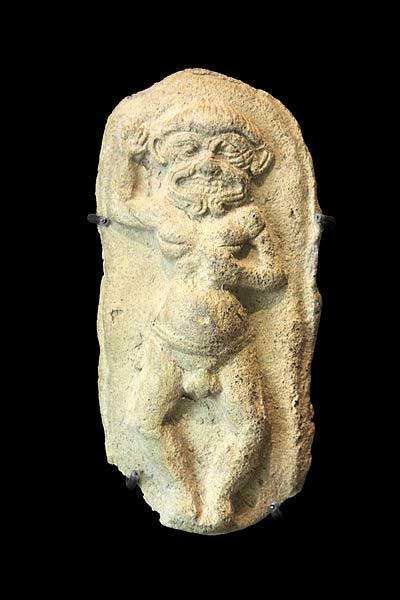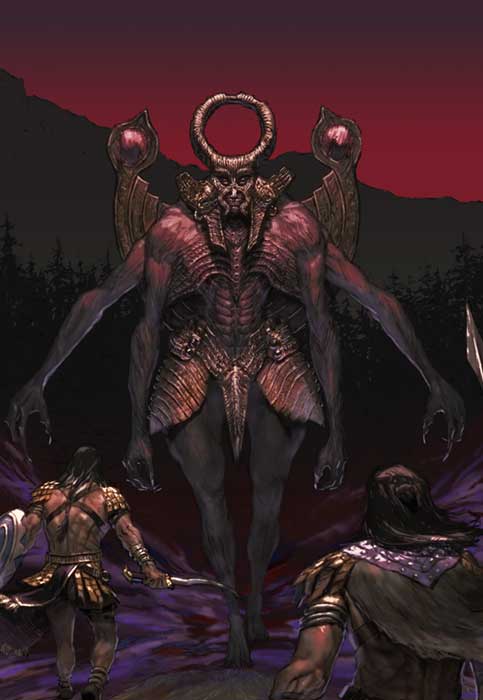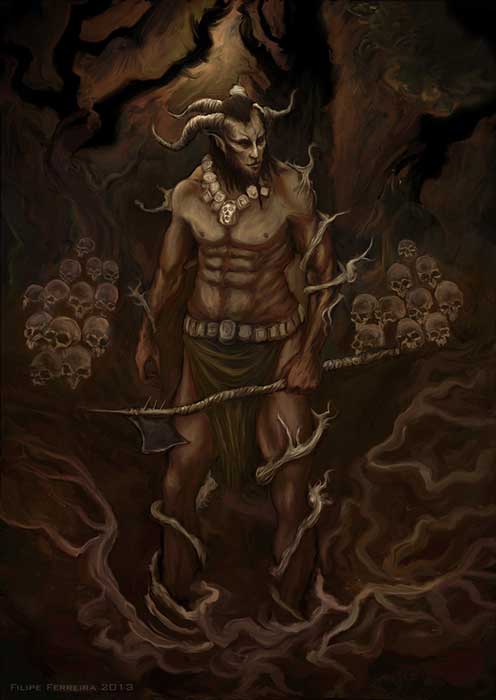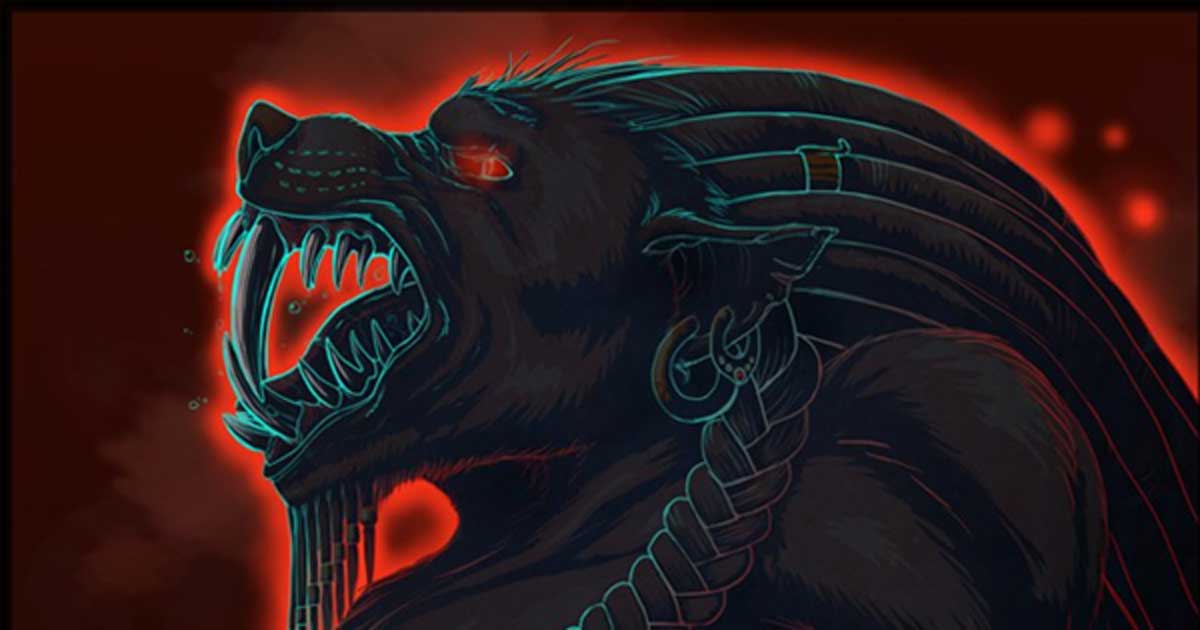Humbaba: A Monstrous Foe for Gilgamesh or a Misunderstood Guardian?
Humbaba (Huwawa) is a guardian creature found in the Epic of Gilgamesh, which is generally considered to be the earliest surviving great work of literature. Although Humbaba is traditionally depicted as a scary and negative figure, in opposition to the protagonist Gilgamesh, a recently discovered tablet portrays him in a more positive light.
This creature is first mentioned in Tablet II of the work, in which he is described as being the Guardian of the Cedar Forest (or Pine Forest, according to Dalley’s translation). In Tablets IV and V, Gilgamesh, along with his friend Enkidu, travel to the Cedar Forest, fight Humbaba, and succeed in slaying him.

Humbaba, deamon guardian of the Cedar Forest. (Rama/CC BY SA 3.0)
Gilgamesh Sets Out for Fame
When the character of Humbaba is introduced he is said to have been assigned by Enlil to guard the Cedar Forest. He is depicted as a terrifying creature, “whose shout is the flood-weapon, whose utterance is Fire, and whose breath is Death,” Nevertheless, Gilgamesh states his intention to journey to the Cedar Forest to slay Humbaba so that he may gain everlasting renown, “Let me set to work and cut down pines, Ensure fame that will last forever!” Although his friend Enkidu and the elders of Uruk warn him against this venture, Gilgamesh remains adamant.
- The Immortals – A Continuation of Myths and Legends
- Oneiromancy and Dream Predictions from Ancient Mesopotamia
- Previously Unknown Lines to the Epic of Gilgamesh discovered in Stolen Cuneiform Tablet
Having prepared weapons, Gilgamesh sets out for the Cedar Forest with Enkidu. Accompanying the pair were 50 young men from the city. During the journey to the Cedar Forest, Gilgamesh went up on a mountain, and made a flour offering there, after which he received a dream. This happened three times, and each dream was interpreted by Enkidu. Gilgamesh was distressed by his dreams but was assured by his friend that the dreams were auspicious, and that they would triumph over Humbaba.

Gilgamesh and Enkidu with Humbaba. (U-RA-CIL/Deviant Art)
Facing Down Humbaba
Tablet V begins with the party’s arrival at the Cedar Forest, which they enter, and come face to face with Humbaba. The monster begins to threaten Gilgamesh and Enkidu and succeeds in intimidating the former. Enkidu, however, provides Gilgamesh with words of encouragement to strengthen his resolve. Having called out to Shamash, the god of the sun, Gilgamesh proceeds to attack.
From the Epic of Gilgamesh, we are told that Humbaba is protected by seven cloaks or ‘radiances’, six of which were removed by Shamash. The god continues to aid Gilgamesh during his battle by summoning great tempests to incapacitate the monster, thus allowing Gilgamesh to vanquish it.
Having been defeated, Humbaba begins to beg for mercy. Enkidu, however, warns Gilgamesh that the terrible beast is not to be trusted, and urges the hero to slay him. Seeing that no mercy would be shown, Humbaba curses Gilgamesh and Enkidu, “Neither one of them shall outlive His friend! Gilgamesh and Enkidu shall never become old men.”

Relief with Two Heroes - the context may be related to the Gilgamesh epic, and display Gilgamesh and Enkidu in their fight with Humbaba. (Public Domain)
After slaying Humbaba, Gilgamesh and Enkidu proceeded to chop down the trees in the Cedar Forest. Humbaba’s head was then severed and placed in a leather bag, which was brought by Gilgamesh to the temple of Enlil.
Humbaba’s head was a popular motif in the folk art of ancient Mesopotamia. This may be seen in the fact that terracotta masks and tablets believed to be depicting his severed head have been unearthed during archaeological excavations. Today, these are displayed in various museums around the world.

Head of Humbaba. (Rama/CC BY SA 3.0)
A New Perspective on a ‘Monster’
Although Humbaba is traditionally depicted as an antagonist in the Epic of Gilgamesh, a recently recovered clay tablet from the museum of Sulaymaniyah has shed a different light on this character. This tablet contains a part of the Epic of Gilgamesh, and it is written that “Where Humbaba came and went there was a track, the paths were in good order and the way was well trodden.”
- The Ascension of Gilgamesh: Did the Epic Hero Actually Exist?
- The Nurturing Goddess Ninsun: Worshipped by Ancient Mesopotamians and the Mother of Gilgamesh
- Forget Death and Seek Life! Fascinating Insights into The Human Condition in 4,000-Year-Old Epic of Gilgamesh
The text continues, “Through all the forest a bird began to sing: A wood pigeon was moaning, a turtle dove calling in answer. Monkey mothers sing aloud, a youngster monkey shrieks: like a band of musicians and drummers daily they bash out a rhythm in the presence of Humbaba.”
In a way, it may be said that Humbaba is portrayed as a sort of benevolent guardian of nature in this version of the story - making Gilgamesh and Enkidu villains as they killed him and chopped down the forest.

Epic of Gilgamesh – Humbaba. (Felipe Ferreira/CC BY NC SA 2.0)
Top Image: A modern representation of Humbaba. Source: Ligos-Dedalius-Kris/Deviant Art
By Wu Mingren
References
AncientPages.com, 2017. Gilgamesh And Enkidu Undertake A Dangerous Mission To Hunt Forest Giant Humbaba. [Online]
Available at: http://www.ancientpages.com/2017/06/01/gilgamesh-and-enkidu-undertake-a-dangerous-mission-to-hunt-forest-giant-humbaba/
Anon., The Epic of Gilgamesh
[Dalley, S. (trans.), 2008. The Epic of Gilgamesh, in Myths from Mesopotamia, Creation, the Flood, Gilgamesh, and Others. Oxford: Oxford University Press.]
Museum of Fine Arts, Boston, 2018. Fragmentary mask of Humbaba. [Online]
Available at: http://www.mfa.org/collections/object/fragmentary-mask-of-humbaba-164546
Parsons, B. L., 2015. Humbaba. [Online]
Available at: https://mrpsmythopedia.wikispaces.com/Humbaba
Tharoor, K. & Maruf, M., 2016. Museum of Lost Objects: The Genie of Nimrud. [Online]
Available at: http://www.bbc.com/news/magazine-35755273
The British Museum, 2018. religious/ritual equipment / mask. [Online]
Available at: http://www.britishmuseum.org/research/collection_online/collection_object_details.aspx?objectId=388863&partId=1&searchText=WCO2647&page=1
The Louvre, 2018. Tablet: mask of the demon Humbaba. [Online]
Available at: https://www.louvre.fr/en/oeuvre-notices/tablet-mask-demon-humbaba


















Comments
Very informative and concise, I enjoyed your article. Thank you
Have you noticed that humbaba looks a lot like the picture in the codex gigas?